livelihoods
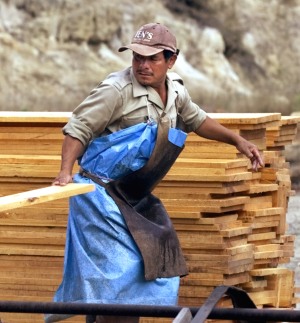
Strengthening the Value Chain for Indigenous and Community Forestry Operations
Strengthening the value chain for indigenous and community forestry operations through increased investment and use of technical assistance
CHALLENGE
Spanish versions of the three case studies:
|
The link between sustainable forest management practices and community benefits has not been well documented. Likewise, the connection between the sale of certified products and conservation outcomes is sometimes lost amid general skepticism. Part of the reason investments in community forestry operations are not well understood is that studies tend to rely on anecdotal evidence rather than income and productivity data.
APPROACH
Building on the successful work of the Rainforest Alliance's Sustainable Forestry Division in Mexico and Central America, PROFOR co-financed three case studies documenting changes in income, return on investment and the role of technical assistance in bringing investments to their full potential in Mexico, Guatemala and Honduras.
The case studies are expected to motivate community forestry operations to invest in their operations and strive for improved competitiveness.
MAIN FINDINGS
- In Mexico, with an investment of $1.1 million over three years, the operation increased sawmilling efficiencies and lowered production costs by 43% without sacrificing jobs. A greater focus on secondary processing and investment in their business led to a change in annual profits from minus $561,646 to plus $1.7 million.
- In Guatemala, FSC certified community concessions increased their revenues by 209% to $5.8 million. Improved saw milling efficiencies and higher grades of mahogany along with FSC certified mahogany price increases drove the increase in revenues as did the addition of a FSC certified non-timber product. Employment increased for women though value added processing for non-timber products. Investments by communities themselves have been modest but donor investments in training and technical assistance have probably exceeded $10 million.
- In Honduras, cooperatives banded together to provide semi-processed mahogany for export to certified markets, changing their production chain and adopting sustainable forest management practices. With only a 19% increase in volume harvested, revenues have increased by 128% to $579,375. Actual production costs rose 40% from 2006 to 2008, due to increased costs of forest management and taxes, as well as the extra care needed to produce quality mahogany grades. The cooperatives have invested over $113,000 in simple machinery.
RESULTS
The results of the three case studies were presented at the World Forestry Congress in Buenos Aires, Argentina in October 2009. The Mexico case study was presented at the Expo Forestal in Mexico in September 2009. In both cases, the data on production, efficiency and community benefits was well received.
The indicators used in these cases studies will be useful for measuring impact in other communities. A new forestry project with CONAFOR/UNDP/GEF and the Rainforest Alliance will use the same methodology and variables in Mexico to measure community level impacts on wood harvesting, usage and income. The Rainforest Alliance is also starting two new community forestry projects in Ghana and Cameroon which will use a subset of these variables, adapted for West Africa.
For stories and updates on related activities, follow us on twitter and facebook , or subscribe to our mailing list for regular updates.
Author : Rainforest Alliance
Last Updated : 06-16-2024
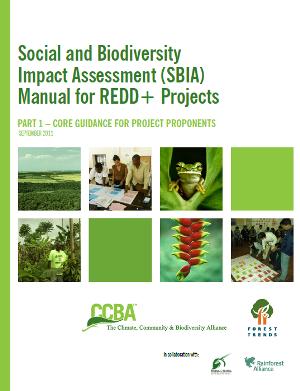
Share
Attachments
Annex 3. CCAH, Peru SIA Case Study 2011_small_0.pdf
Annex 2. GuateCarbon, Guatemala SIA Case Study 2011 Edited_small_0.pdf
Annex 1 Surui Carbon Project SIA Case Study 2011_small_0.pdf
Report on SIA Case Studies for PROFOR_0.pdf
Authors/Partners
Authors: Forest Trends'Â Michael Richards and Steve Panfil with key inputs by Nigel Pitman, Steven Price, Natasha Calderwood and Julie Fischer.Partners: Forest Trends and CCBA, with Rainforest Alliance and Fauna & Flora International (FFI).Sponsors: PROFOR, Morgan Stanley, USAID-TransLinks, GEF-UNDP, Rockfeller Foundation and NORAD provided financial support.
Social Impact Assessment of Forest Carbon Projects (toolkit)
CHALLENGE
Are land-based carbon projects good for local people?
Many rural communities are keen to embark on carbon projects as a way of generating income, jobs, and other social benefits. Offset buyers are also attracted to the idea of reducing emissions and simultaneously helping local people. Others are wary that these projects may do more harm than good. However, until recently, there was no clear methodological guidance for carbon project developers to track social and biodiversity impacts. The combination of robust standards for assessing the social performance of projects, and the use of credible methods of social impact assessment could help ensure positive outcomes for local people.
The emphasis in the early years of the carbon markets has been mainly on assuring the integrity of project emission reductions; co-benefits have received much less attention. But the balance is changing, and there are justifiable concerns that co-benefits must, like carbon, be real, ‘additional’ and, as far as possible, measurable. This is partly necessary for market confidence as offset buyers increasingly seek evidence that they are getting what they pay for, including co-benefits. On ethical or equity grounds, carbon projects must at the very least ‘do no harm’ (See related IIED conclusions on REDD+ in the miombo drylands.)
A cost-effective and credible impact assessment toolbox would help carbon project developers meet the verification requirements of the Climate, Community & Biodiversity (CCB) Standards and contribute to building more robust, sustainable projects.
APPROACH
In response to such issues, Forest Trends has formed an alliance with three other NGOs – the Climate, Community and Biodiversity Alliance (CCBA), Rainforest Alliance, and Fauna & Flora International (FFI) – to produce a user-friendly Manual for project proponents on how to conduct cost-effective and credible social impact assessment. Support for this project comes from PROFOR, Morgan Stanley, NORAD, GEF-UNDP, and USAID-Translinks.
The manual is intended for carbon offset project designers and implementers who are not specialists in monitoring and evaluation (M&E).
The Manual was field-tested in 2010 in Brazil, Guatemala and Peru.
RESULTS
Forest Trends released a first version of its manual in June 2010, proceeded to test it in the field (see case studies listed on this page) and solicited feedback. A second version, which integrated biodiversity concerns as well, was released in the fall of 2011 in three parts: a core guidance document and two toolkits (for social and bioversity impact assessments).
Guidance to project developers has been provided by regional training workshops held in Peru (June 2010), Tanzania (October 2010), Kenya (August 2011 with GEF-UNDP funding) and DRC (September 2011 with USAID-Translinks funding). This has resulted in training of approximately 80 terrestrial carbon project developers and other REDD+ stakeholders from about 10 countries. These workshops involved hands-on training using ‘real’ REDD+ projects as case studies over a period of 3-4 days.
In Tanzania, the Tropical Forest Conservation Group (TFCG) REDD project in Lindi District has undertaken a large scale SIA exercise in 2011 following their participation in the SIA Training workshop in Zanzibar in October 2010.
FINDINGS
Experience during field testing and further training in social impact assessment shows that the benefits of using the ‘theory of change’ approach to impact assessment go well beyond the generation of a credible social monitoring plan which can meet the CCB or other multiple benefit standards. These wider benefits include: strategic project design necessary for achieving social and biodiversity objectives (clear objectives are essential for identifying monitoring indicators); participation of project stakeholders; promotion of adaptive project management; and the ease of understanding and explaining the results to a range of stakeholders.
Keys to better participation of local stakeholders include the quality of the ‘focal issue working group’ facilitators (so the latter need to be more carefully selected and trained); some prior training or exposure for community participants; the use of a ‘practice activity’ to develop good practice consultation skills; and various issues around the more effective participation of local stakeholders, especially women.
Based partly on the costs in the three case studies, the authors estimate that the cost of generating a credible social monitoring plan using their approach will be in the range $25,000-35,000 depending on various factors.
For stories and updates on related activities, follow us on twitter and facebook , or subscribe to our mailing list for regular updates.
Author : Authors: Forest Trends'Â Michael Richards and Steve Panfil with key inputs by Nigel Pitman, Steven Price, Natasha Calderwood and Julie Fischer.Partners: Forest Trends and CCBA, with Rainforest Alliance and Fauna & Flora International (FFI).Sponsors: PROFOR, Morgan Stanley, USAID-TransLinks, GEF-UNDP, Rockfeller Foundation and NORAD provided financial support.
Last Updated : 06-16-2024

Share
Road to Kunming: Economics and Finance for Biodiversity
PROGRAM SUMMARY
The development objective of this activity is to raise awareness among staff in ministries of finance and other sector ministries of WB client countries and among international financial sector stakeholders of the importance and opportunity of investing in biodiversity and ecosystem services sustainable management.
CHALLENGE
APPROACH
RESULTS
Event on “Invest in Nature” at IMF-WBG Annual Meetings 2019. The event was attended in person by ~200 people in the room, including ministers, international organizations and Bank leadership, and online by 575 people (of which 41.3 percent women). Most people who engaged online were 25-34 years old. Almost 18,000 people visited the event page. The event was the fourth most livestreamed event at the 2019 Annual Meetings (out of 19 livestreamed events). The event hashtag #InvestInNature reached more than 5 million Twitter users, generating 23.5 million impressions worldwide, and trending in DC area during the live event. On live engagement/comments, the event was rated 2nd out of 19 live-streamed events. Online, the event attracted strong engagement from key influencers, including Alok Sharna, UK, Zac Goldsmith, UK, Inger Andersen, UN Environment, IPBES, CBD.
China-WB workshop on “Maximizing private finance for biodiversity and ecosystem services”. Over the course of the two days, the workshop was attended by 67 (of which 26 women) representatives of the Chinese Government, notably from the Ministry of Finance and the MEE, and several other CBD Parties and the Secretariat, the European Commission, the financial sector, multilateral and bilateral development agencies, NGOs and academic experts. The workshop was attended at high level with two Director Generals (from Ministry of Finance and Ministry of Ecology and Environment). On the World Bank side, the event was attended by the ENB Global Director and by the EAP Regional Director.
It had been envisaged that the activities would contribute to inform the preparation of the post-2020 global biodiversity framework and in particular the policy mainstreaming and the resource mobilization dimensions of the framework. Through the dialogue in these activities the team was able to inform the preparation of the zero draft of the post-2020 global biodiversity framework. The participation of the UK at the Annual Meetings event was instrumental in engaging with that country on follow up action such as a possible collaboration with DEFRA on ecosystem policy modelling. On the finance side, the activity allowed to inform the work of the expert panel on resource mobilization for the post-2020 framework.
For stories and updates on related activities, follow us on twitter and facebook , or subscribe to our mailing list for regular updates.
Last Updated : 06-16-2024
Share
External Related Links
World Bank Forestry Development Project in China
Attachments
China-StateForestReform-Jintao-Xu_0.pdf
Authors/Partners
Professor Jinato Xu, leading expert on Chinese forestry at Peking University
Reform of State Forest Management in Northeast China
CHALLENGE
The reform of state forest management has become a priority issue in Northeast China. Unlike the collective forest areas of Southern China, Northeast China's state forest enterprises (SFEs) have not been successfully transformed. A decline in timber productivity (due to overexploitation and degradation of forests) has been acompanied by economic stagnation and heavy fiscal obligations toward state forest enterprise workers, leaving SFEs highly dependent on subsidies and transfers.
APPROACH
Although the World Bank has been an important partner of the Chinese government in the forestry sector over the past 20 years (supporting over 3 million hectares of plantation establishment and over 1 million hectares of protected areas), its engagement on forestry policy reforms has been limited. With PROFOR support, the World Bank's East Asia and Pacific staff sought to inform policy and institutional reforms in key state forest management areas in Northeast China, to promote the transformation of practices toward economic viability, sustainable forest resource management, and local livelihood security.
The resulting study, State Forest Reform in Northeast China: Issues and options, was published as a Working Paper by PROFOR in October 2013.
Research for this study coincided with the Government's internal evaluation of the first phase of the Natural Forests Protection Program (1998-2010) and the formulation of the program's second phase.
The study drew on several background reports including: a historical review of forest management in the Northeast China by the State Forest Administration; an analysis of extensive data on forest resources and socio-economic conditions from two surveys conducted in 2005 and 2009 surveys by Jintao Xu and Xuemei Jiang; and a critical review of performance and lessons at existing pilot reform sites and state forest enterprises, by Yuehua Wang and Zhenbin Gu. The background papers were originally written in Chinese and shared at a workshop held in Beijing in May 2012. Several of the background papers are available in translation in the annexes of the document
MAIN FINDINGS
The study considers three options for institutional reform:
- the centralization of state forest management;
- the decentralization of local management responsibilities to the province;
- and a combination of the two, with clearly delineated functions and responsibilities.
Ultimately, whichever option is pursued requires current functions and control to be reallocated, and this issue remains divisive and politically sensitive.
The paper concludes by stressing the importance of consolidating stakeholders’ interests to create a common vision for the reform. The assessment of the ongoing pilot reforms will provide a solid foundation to evaluate options for moving forward, though the reforms will need to be set in the context of the wider challenges of social service provision, infrastructure development, and achieving an appropriate balance between resource extraction and protection. There is considerable scope for the northeastern forests to support the local and national economies, through timber extraction as well as diversified uses including tourism and nontimber forest products. Achieving this requires central government leadership to reform the current system and put in place the necessary institutional framework and incentive structures.
For stories and updates on related activities, follow us on twitter and facebook , or subscribe to our mailing list for regular updates.
Author : Professor Jinato Xu, leading expert on Chinese forestry at Peking University
Last Updated : 06-16-2024
Share
Authors/Partners
World Bank Latin America and Caribbean Region, CONAFOR
Redesigning the Mexican Forest Fund to support sustainable forest management
BACKGROUND
The Government of Mexico recognizes the critical importance of forests as a natural asset for domestic socio-economic development as well as for the environmental services they provide. The Government’s commitment to this agenda is evidenced by its participation in relevant international fora, such as President Calderon’s statements on REDD+ at COP 16 in Cancun, Mexico’s leading role in the Forest Carbon Partnership Facility, and a new partnership with Costa Rica and Ecuador to learn lessons about how Payment for Environmental Services programs in those countries can create conditions for future REDD+ implementation.
CONAFOR (Comisión Nacional Forestal) was created as a decentralized agency by decree in 2001 with the objective of developing, supporting, and encouraging productive activities related to conservation and forest restoration, and of applying the policy of sustainable forest development. To that end, CONAFOR’s main financial instrument is the Forest Fund which:
- facilitates access to financial services
- promotes projects to integrate and increase the competitiveness of production chains
- develops mechanisms for payment of environmental services
- promotes bonds associated with the conservation of forest resources
- and also channels direct subsidy payments to communities to support activities such as reforestation, soil conservation, community forest management, and payments for environmental services.
CHALLENGE
The size of the Forest Fund and the scale of its operations have grown tremendously since its inception in 2001. The number of transactions has increased from about 200 per year to about 12,000 and the size of the fund has grown from about 20 to 600 million dollars. Also, some additional financial mechanisms have been created linked to the Forest Fund, such as a guarantee fund for forest plantations. In addition, it is expected that the Forest Fund will play an enabling role as part of the financial architecture that will be used to manage new financing associated with REDD+.
APPROACH
In light of Mexico’s changing circumstances and needs, CONAFOR and the World Bank proposed in 2011 to collaborate to redesign the Forest Fund so that it becomes a state-of-the art, best-practice financial mechanism, by:
- identifying key desirable features in the Forest Fund emerging from the current climate discussions and current and future needs,
- identifying international good practices relevant to Mexico’s needs (this desk review would build on previous work supported by the UNFF and its Ad-Hoc Expert Group on Forest Finance, and work on national forest financing strategies supported by Tropenbos, the NFP Facility, as well as others)
- providing summary recommendations and options for the redesign of the Fund that are feasible in the Mexican legal context.
RESULTS
This activity was closed in April 2012 because of lack of progress with the proposed analytical and policy support. However the redesign of the Mexican Forest Fund is underway.
For stories and updates on related activities, follow us on twitter and facebook , or subscribe to our mailing list for regular updates.
Author : World Bank Latin America and Caribbean Region, CONAFOR
Last Updated : 06-16-2024
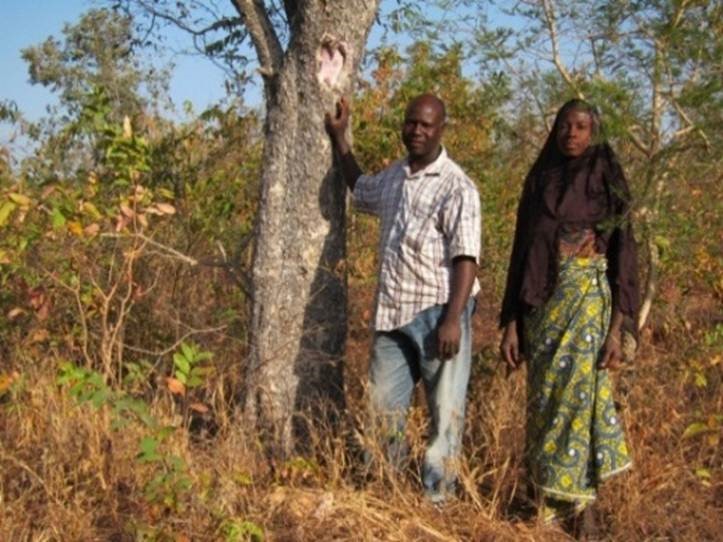
Share
Related Links
Forests, Trees, and Woodlands in Africa
Prevalence, Economic Contribution, and Determinants of Trees on Farms across Sub-Saharan Africa
Authors/Partners
LSMS-ISA, Worldbank
Trees and smallholder agriculture - a household perspective from Subsaharan Africa
CHALLENGE
Trees have the potential to be an important crop in the overall agriculture, food security, and poverty debates in setting appropriate policy in Sub-Saharan African countries. However, there is currently insufficient knowledge and appreciation of the benefits of on-farm tree planting (and agroforestry) to agricultural production and farmers’ livelihoods.
APPROACH
This activity aims to enhance the understanding and appreciation of the role of on-farm trees in forestry (as a share of total forest land), agriculture, and farmers’ livelihoods in Africa. The study proposes to establish a baseline for further benchmarking and tracking the evolution of on-farm tree planting within the broader context of Africa’s forestry developments. Policy discussions will be informed by more nationally representative, data-driven analysis and evidence-based in-country dialogues on the role of on-farm trees in Africa’s forestry and agricultural policies by linking the rich, geo-referenced socioeconomic data sets of households with secondary information on forests.
RESULTS
The final report Prevalence, Economic Contribution, and Determinants of Trees on Farms across Sub-Saharan Africa was published on August 2016.
Significantly, this report provides the first national-scale evidence on the contribution of trees outside of forests to household incomes in Africa. The report summarizes data collected from the Living Standards Measurement Study–Integrated Surveys on Agriculture in five countries: Ethiopia, Malawi, Nigeria, Tanzania, and Uganda.
The report findings show that trees on farms are widespread. On average, one third of rural smallholders grow trees. In fact, trees account for an average of 17 percent of total annual gross income for tree-growing households and 6 percent for all rural households. Gender, land and labor endowments, and especially forest proximity and national context are key determinants of on-farm tree adoption and management. These new, national-scale insights on the prevalence, economic contribution and determinants of trees on farms in Africa lay the basis for exploring the interaction of agriculture, on-farm tree cultivation, and forestry. This will improve our understanding of rural livelihood dynamics.
Finally, a key achievement has been that our work has placed trees on farms more squarely on the agenda for World Bank-supported national household survey data collection in the coming years. In fact, the World Bank has pledged to support the 78 IDA countries in the production of a multi-topic household survey every three years between 2016 and 2030, and a methodological research agenda has been developed to further this goal during fiscal 2017–19. Further investment in the inclusion of forestry modules in household surveys can help strengthen the information base on on-farm tree growing. Otherwise, the contribution of trees on farms risks being ignored and left out in agricultural and landscape policy design.
For stories and updates on related activities, follow us on twitter and facebook , or subscribe to our mailing list for regular updates.
Author : LSMS-ISA, Worldbank
Last Updated : 06-16-2024
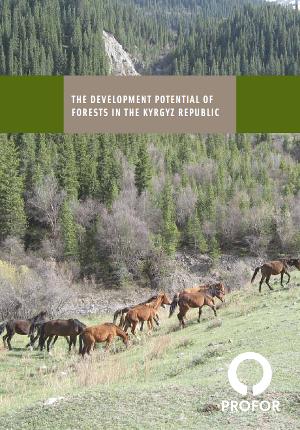
Share
Attachments
Questionnaire-Kyrgyz-forestuse_0.pdf
Walnut_Value_Chain_KyrgyzRepublic_0.pdf
ProFor Kyrgyz report_web_0.pdf
Authors/Partners
Asyl Undeland (Consultant) and Willie Bourne (International Value Chain and Marketing Specialist). The Kyrgyz-based Rural Development Fund and the World Bank Europe and Central Asia Region.
The Development Potential of Forests in the Kyrgyz Republic
CHALLENGE
What are the structural and institutional constraints to generating income from Non-Timber Forest Products (NTFPs) and ensuring the benefits accrue to poor rural communities in the Kyrgyz Republic?
More than 35% of Kyrgyz Republic’s population lives below the poverty line. And the poorer, more isolated rural communities tend to rely on forests as a source of consumables, energy, and to an increasing extent, income-generating produce. This is especially true for the villagers who live on the periphery of walnut forests who depend on this resource for their daily subsistence and income.
The export potential for NTFPs in the Kyrgyz Republic is inadequately known. But opportunities could be significant. For example, dry nuts are non-perishable, have a high value per unit of weight, and benefit from marked increase in international demand.
APPROACH
In 2009-2011, PROFOR supported analysis in this area in collaboration with the World Bank to provide a stronger factual base for the growing debate in the country concerning forest management. At the request of the State Agency for Environment and Forestry, special attention was paid to issues of management of municipal forests.
The activity was implemented by the Rural Development Fund, a Kyrgyz-based NGO, which focused the study on five forestry enterprises (leskhoz). In addition, a specialist conducted a detailed analysis of the value chain for one of the most important NTFPs in the area -- walnuts.
RESULTS
The main report, The Development Potential of Forests in the Kyrgyz Republic, contains seven key recommendations to alter the current dynamics of forestry management:
1. Review and ensure alignment within policy direction, the legislative underpinning of that policy, and on-the-ground realities of how forests are used now and can reasonably expected to be used in the future.
2. Address the poor incentive structures within leskhoz management by revising their administrative and financing frameworks.
3. Integrate management of leskhoz lands that are suitable for pasture to the overall pasture management systems.
4. Increase the involvement of communities through a deliberate, gradual process.
5. Consider other implementation modalities for Community Based Forest Management.
6. Consider an enhanced role for local governments in holding leskhoz accountable.
7. Secure assistance to continue capacity support at both the national and local levels.
The Analysis of the Walnut Value Chain in turn, shows that improvements to the efficiency of the walnut value chain in Jalal-Abad could improve the income and livelihoods of many participants, increase employment through value addition and increase the national GDP through exports. Regional economic growth, if equitably distributed, could also serve to reduce ethnic tensions and division. Support to improve the efficiency of value chains of walnuts and other NTFPS would also help to promote sustainable walnut-fruit forestry management practices, currently under threat from increased population pressure, deforestation and livestock farming
In addition to the two reports available on this page, workshops were held with high buy in and participation from government institutions as well as other relevant stakeholders.
The reports' findings should help inform implementation of government and donor interventions to improve forest management, with a focus on the relationships between State Forest Enterprises inherited from the Soviet era (leskhoz) and local villagers in harvesting timber and NTFPs. In particular, the formulation of specific recommendations for overcoming policy and market value chain problems should help increase the benefits that communities derive from forests and their products.
For stories and updates on related activities, follow us on twitter and facebook , or subscribe to our mailing list for regular updates.
Author : Asyl Undeland (Consultant) and Willie Bourne (International Value Chain and Marketing Specialist). The Kyrgyz-based Rural Development Fund and the World Bank Europe and Central Asia Region.
Last Updated : 06-16-2024
Share
Attachments
Authors/Partners
ISRIC World Soil Information and Wageningen UR
Targeting Watershed Rehabilitation Investments in Turkey
CHALLENGE
The Government of Turkey has become a global leader in the fight against soil erosion, by making extensive investments in rehabilitating degraded landscapes. With support from the World Bank, poor communities in upland catchments have been engaged in developing and implementing a program of watershed rehabilitation. This integrated approach has succeeded in helping to tackle the problem of poverty in these communities. It has also succeeded as a model for rural service delivery by providing a platform for multiple government institutions to work together to be responsive to locally identified constraints and needs.
One weakness of the approach, however, is that the selection of the most critical catchments for investment in land rehabilitation activities remains somewhat subjective. The current choice of investments which seek to balance the need to rehabilitate badly degraded areas with prevalence of rural poverty and areas hard-hit by urban migration are based largely on perceptions.
APPROACH
This project seeks to identify land degradation hot spots in Turkey, and, working with available datasets on wealth and poverty in Turkey, overlay these with information on where the poorest households are most vulnerable to the problem of land degradation.
The findings will be useful for the Ministry of Environment and Forestry to better target its already extensive investments in watershed rehabilitation on the most critical areas in Turkey where land degradation is both a serious problem and where problems of poverty are most severe and improve the efficiency of public spending on watershed rehabilitation.
The findings will also be linked to ongoing national policy and institutional processes, to complement Turkey’s Action Plan for Combating Deforestation, the measures outlined in the 9th National Development Plan which focus on reducing land degradation, and institutional measures which are expected to complement Turkey’s efforts with respect to accession to the European Union.
RESULTS
This activity is ongoing. Findings will be shared on this page when they become available. You can also follow us on twitter (twitter.com/forestideas) or subscribe to our mailing list for regular updates.
For stories and updates on related activities, follow us on twitter and facebook , or subscribe to our mailing list for regular updates.
Author : ISRIC World Soil Information and Wageningen UR
Last Updated : 06-16-2024
Share
Related Links
Attachments
Authors/Partners
CSIRO, AUSAID, PROFOR
Sustainable Use of Natural Resources in Indonesia
APPROACH
This project was carried out by CSIRO with support from PROFOR and AUSAID as a part of an ongoing project (Developing Tools for Modeling the Impacts of Macro-economic Policies on Local Livelihoods and Natural Resources).
RESULTS
The main output of the project is an Agent-Based Modeling (ABM) tool that could potentially lead to a better understanding of the linkages between forests, livelihoods, and national policies, and could also be used to investigate questions of interest to planning, management, and budgeting agencies concerned with natural resources management and sustainability.
During this particular project in East Kalimantan, Indonesia, PROFOR supported a survey of 3,000 households across six districts in the southern half of the province and detailed interviews of 540 households in the area, and funded analytical and descriptive work as well as activities that strengthened collaboration with stakeholders from government and civil society.
The household survey was designed to provide data about household use of a range of natural resources as well as information about the values that people place on them. Household interviews were used to identify households’ changes in natural resource use in response to rising energy prices. While designed largely to develop behavioral response functions as a base for the agent-based model, the survey provides valuable stand-alone information. A key finding from the survey is the high proportion of households that use or value natural resources in the study area.
Based on the workshop response, regional policy makers are now engaged in the modeling process from the ground up. They anticipate that the agent-based model will benefit local governments (specifically the provincial level economic development planning agency (Bappeda) by providing an analytical tool for understanding the consequences of macro-policy decisions on dynamics within a region. The model is spatially explicit, enabling users to analyze economic, social and environmental dynamics between and within districts. It provides a tool for regional planning in the context of macro-policy decisions and will quantify results in diagrams, and visualize results in maps.
A baseline analysis of users’ impressions and project impact (May 2008) found that policy makers were engaged in the process, interested in the results, and ready to commit staff time to apply the models and incorporate findings into NR planning processes.
For stories and updates on related activities, follow us on twitter and facebook , or subscribe to our mailing list for regular updates.
Author : CSIRO, AUSAID, PROFOR
Last Updated : 06-16-2024
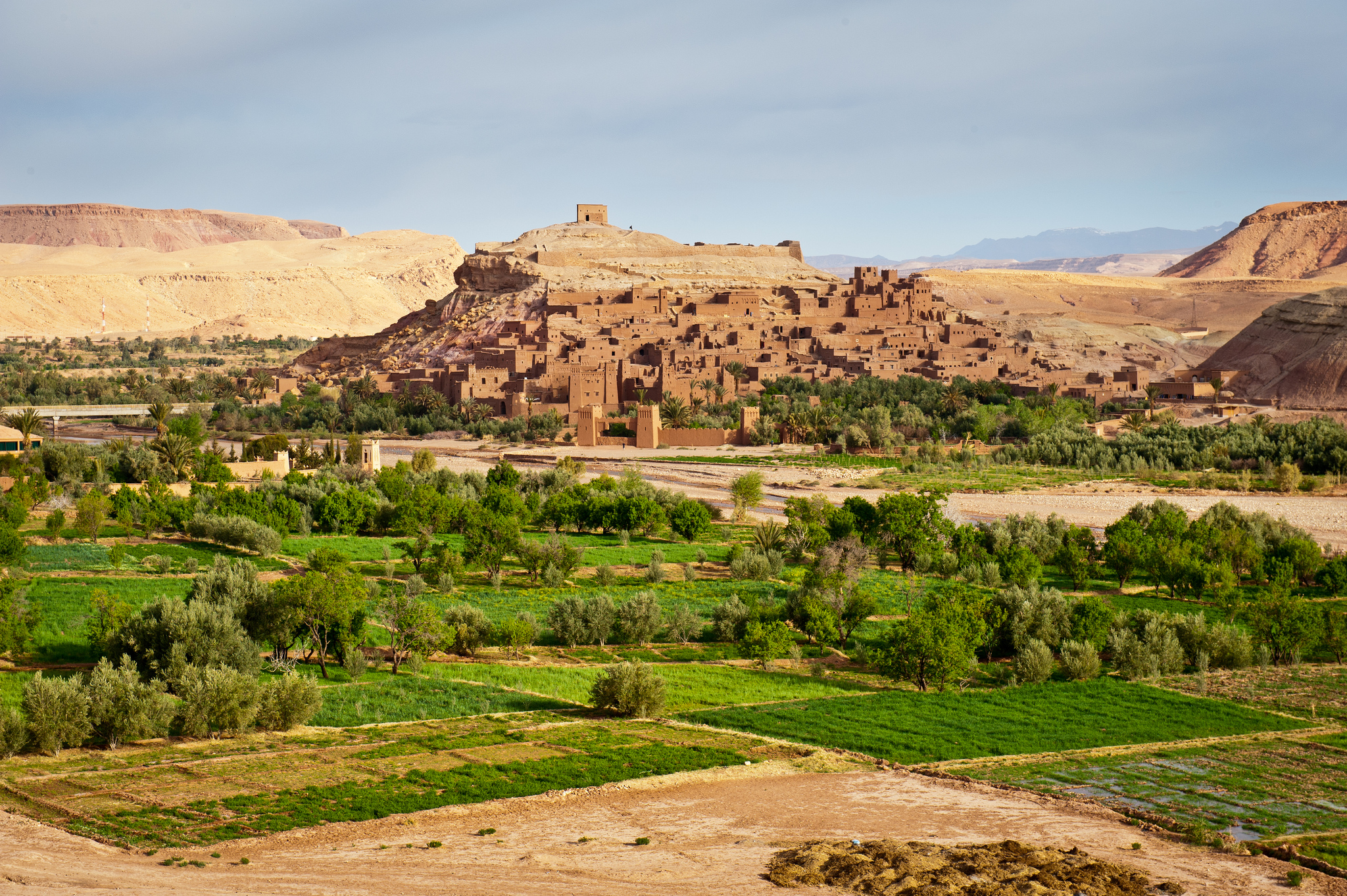
Sustainable landscape management for improved livelihoods in the Middle East and North Africa
Program Summary
This PROFOR activity aims to build the necessary evidence base and rationale for developing a regional and harmonized program on landscape restoration and sustainable management in the arid, semi-arid, and desert areas of sub-Saharan Africa, the Maghreb, and the Mashreq.
Challenge
In MENA and sub-Saharan African countries, there is a growing awareness of the important social, economic and environmental roles played by forests, rangelands, and oasis landscapes. All of these ecosystems face threats from agricultural expansion and increasing demand for food, fiber, fuel, and minerals, as well as misguided agricultural policies.
There is also growing evidence of significant negative externalities from landscape degradation - including the impacts of climate change, biodiversity loss, air pollution, soil erosion, rural poverty, and migration. These issues are gaining political attention at the global, regional, and national levels, but while several initiatives have been launched to combat landscape degradation and strengthen resilience to climate change, more transformative investment is needed.
Approach
This activity will first review existing literature on the extent, impact, and economic costs of land degradation and desertification over the last couple of decades in MENA and Sub-Saharan African countries.
Subsequently, the team will assess progress made by national and regional restoration programs, and identify the primary barriers to furthering that progress using PROFOR’s PRIME framework. Other land restoration programs will be evaluated for lessons learned and applicability to the targeted regions, including experiences from China (e.g. the Green Wall Initiative) and the United States (e.g. actions taken to combat the Dust Bowl phenomenon).
Based on this analysis, this activity will explore how the World Bank can best leverage its convening power to bring together (and finance) restoration initiatives. An economic feasibility study will be carried out, looking at the potential for a regional program on landscape restoration and sustainable management.
Results
- Sustainable Land Management & Restoration in the MENA Region – Issues, Challenges and Recommendations
- Sand and Dust Storms in the MENA Region – Sources, Costs and Solutions
For stories and updates on related activities, follow us on twitter and facebook , or subscribe to our mailing list for regular updates.
Last Updated : 06-16-2024








